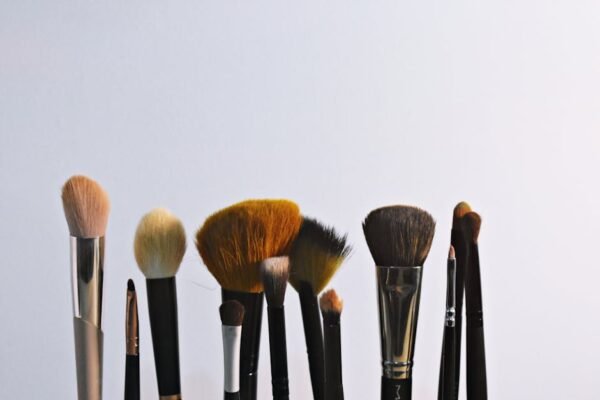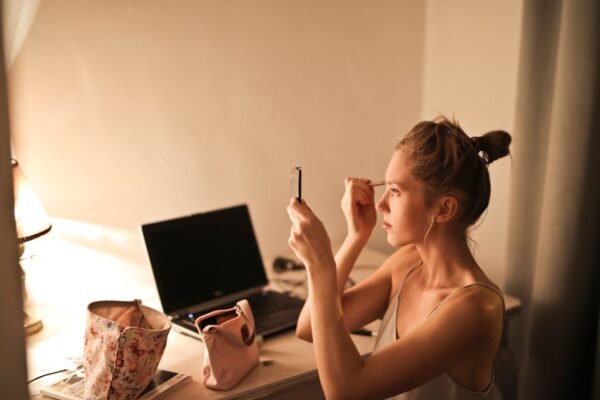Introduction to LED Light Therapy
{“type”:”img1″,”src”:”https://facehubs.com/wp-content/uploads/2024/03/fileUpload-43.jpg”,”alt”:”person receiving LED light therapy”}LED light therapy is gaining momentum as a popular non-invasive treatment for various skin concerns. It involves using light-emitting diodes (LEDs) of various wavelengths, including red and blue light, to target different skin issues. Unlike UV light, LED light does not cause sunburn and is not damaging to the skin. This therapy can be used for acne, anti-aging, and even to speed up wound healing.
Despite its rising popularity, many people are still uncertain about how effective LED light therapy really is. This article aims to shed light on the science behind LED therapy, its benefits, and what to expect during a treatment session. As we delve deeper, it's important to remember that, like any skincare treatment, results can vary from person to person.
LED light therapy works by emitting wavelengths of light that penetrate deep into the skin. Depending on the light, it can have anti-inflammatory, anti-bacterial, or collagen-boosting effects. For instance, red light is renowned for its anti-aging properties, while blue light is often used to tackle acne.
One of the main attractions of LED light therapy is its non-invasive nature. Unlike laser treatments, it does not damage the skin's surface. This means there's no recovery time needed, making it a convenient option for people on the go.
However, it's crucial to have realistic expectations. LED light therapy can offer significant improvements, but it's not a magic cure-all. Consistency and patience are key, as effects are generally more noticeable after several sessions.
Benefits of LED Light Therapy
LED light therapy offers a range of benefits for the skin. The most notable among these is its ability to reduce inflammation, making it a potent ally against acne. By decreasing the production of oil and targeting acne-causing bacteria, LED therapy can lead to clearer, healthier-looking skin.
Beyond acne, LED light therapy is also celebrated for its anti-aging effects. Red LED light, in particular, can stimulate collagen production, leading to fewer wrinkles and a more youthful appearance. It's like giving your face a gentle, non-surgical lift without the downtime.
But the benefits don't end there. LED therapy can also speed up the healing process of wounds and lessen the appearance of scars. This makes it an excellent option for post-surgical care or to help heal minor cuts and abrasions faster.
Furthermore, for individuals with sensitive skin, LED light therapy can be a game-changer. Its gentle approach means it's less likely to cause irritation or exacerbate existing skin conditions compared to more invasive treatments.
Lastly, the psychological benefits of clearer, brighter skin cannot be understated. Improvements in skin condition can lead to a significant boost in self-confidence and wellbeing.
What to Expect During a Treatment Session
{“type”:”img1″,”src”:”https://facehubs.com/wp-content/uploads/2024/03/fileUpload-44.jpg”,”alt”:”home LED light therapy device”}For those new to LED light therapy, knowing what to expect during a session can alleviate any concerns. The procedure is remarkably simple and can be done in a professional setting or at home with the right equipment.
During a professional session, you'll be asked to lie down while a device emitting LED lights is positioned over your face. Protective goggles are usually provided to shield your eyes from the bright light. Each session typically lasts between 10 to 20 minutes, during which you can relax as the LED works its magic.
At-home devices, while generally less powerful than professional equipment, offer the convenience of being able to perform the treatment on your own schedule. These devices come in various forms, including masks and handheld units. It's important to follow the manufacturer's instructions closely to ensure both safety and efficacy.
After the session, no downtime is required. You can go about your day as usual, though some might experience mild redness immediately after the treatment. This is temporary and should subside within a few hours.
For best results, consistency is key. While one session can provide some immediate radiance, a series of treatments is typically recommended to achieve significant improvements in skin condition. Your skincare professional can guide you on the optimal frequency and duration of sessions for your specific skin concerns.
Choosing the Right LED Light Therapy Device
With the increasing availability of at-home LED light therapy devices, it's essential to choose one that's both effective and safe. Look for devices that have been FDA-cleared for safety and efficacy. Reading reviews and asking for recommendations from trusted sources can also help guide your decision.
It's crucial to consider the specific skin issues you want to address. Different wavelengths of light target different concerns, so selecting a device that offers the specific type of light you need is important. For example, a combination of red and blue light might be best if you're dealing with both acne and signs of aging.
Price is also a factor to consider. While more expensive devices may offer more features or higher intensities of light, there are also many affordable options that can be effective. Balance your budget with your skin care needs to find the best option for you.
Finally, remember that LED light therapy devices are not a substitute for a good skincare routine. They should be used in conjunction with, not in place of, a well-rounded skincare regimen that includes cleansing, moisturizing, and sun protection.
As with any skincare treatment, consultation with a dermatologist or skincare professional is recommended before starting LED light therapy, especially if you have existing skin conditions or concerns.
Conclusion
LED light therapy offers a promising solution for various skin concerns, from acne and inflammation to signs of aging and wound healing. Its non-invasive nature and ability to be used at home make it an accessible option for many. However, setting realistic expectations and being consistent with treatments are crucial to achieving the best outcomes.
As technology evolves, LED light therapy continues to advance, offering even more effective treatments. By choosing the right device and combining it with a good skincare regime, you can maximize the benefits of LED light therapy for healthier, more radiant skin.
Remember, skincare is deeply personal. What works for one person may not work for another, so it's important to approach any new treatment with patience and an open mind. With the right approach, LED light therapy can be a valuable addition to your skincare arsenal.





